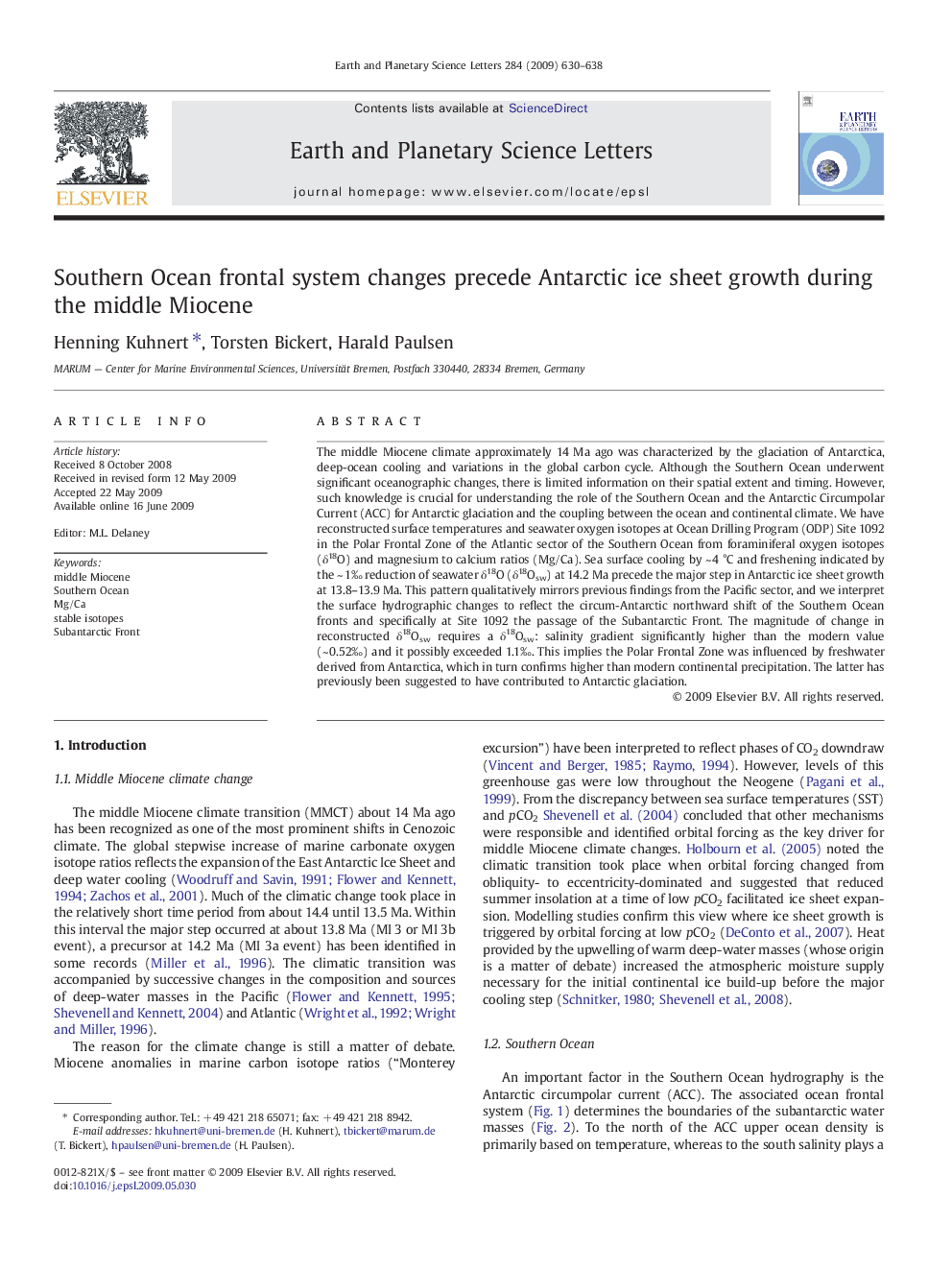| Article ID | Journal | Published Year | Pages | File Type |
|---|---|---|---|---|
| 4679015 | Earth and Planetary Science Letters | 2009 | 9 Pages |
The middle Miocene climate approximately 14 Ma ago was characterized by the glaciation of Antarctica, deep-ocean cooling and variations in the global carbon cycle. Although the Southern Ocean underwent significant oceanographic changes, there is limited information on their spatial extent and timing. However, such knowledge is crucial for understanding the role of the Southern Ocean and the Antarctic Circumpolar Current (ACC) for Antarctic glaciation and the coupling between the ocean and continental climate. We have reconstructed surface temperatures and seawater oxygen isotopes at Ocean Drilling Program (ODP) Site 1092 in the Polar Frontal Zone of the Atlantic sector of the Southern Ocean from foraminiferal oxygen isotopes (δ18O) and magnesium to calcium ratios (Mg/Ca). Sea surface cooling by ~ 4 °C and freshening indicated by the ~ 1‰ reduction of seawater δ18O (δ18Osw) at 14.2 Ma precede the major step in Antarctic ice sheet growth at 13.8–13.9 Ma. This pattern qualitatively mirrors previous findings from the Pacific sector, and we interpret the surface hydrographic changes to reflect the circum-Antarctic northward shift of the Southern Ocean fronts and specifically at Site 1092 the passage of the Subantarctic Front. The magnitude of change in reconstructed δ18Osw requires a δ18Osw: salinity gradient significantly higher than the modern value (~ 0.52‰) and it possibly exceeded 1.1‰. This implies the Polar Frontal Zone was influenced by freshwater derived from Antarctica, which in turn confirms higher than modern continental precipitation. The latter has previously been suggested to have contributed to Antarctic glaciation.
